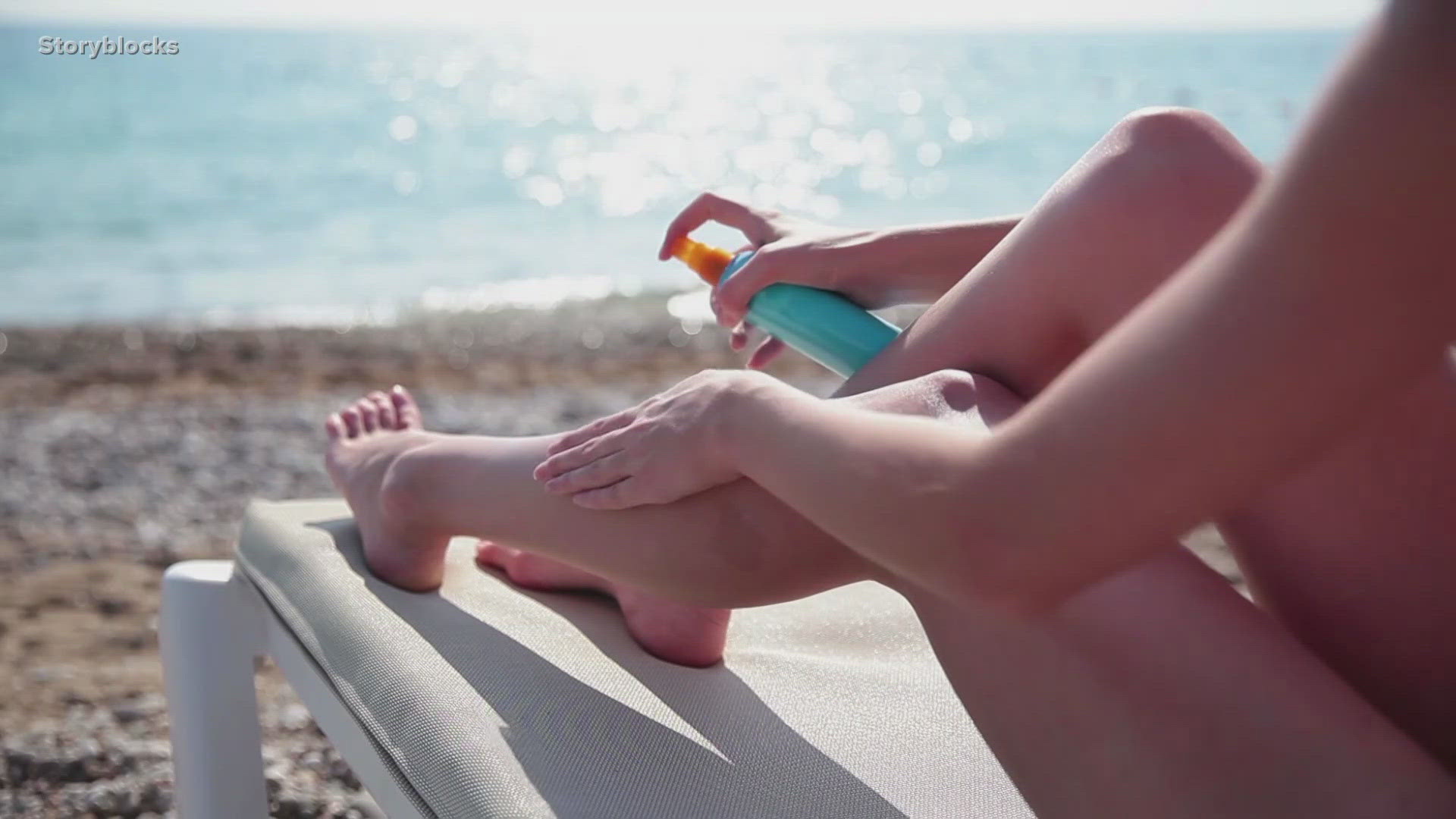HAWAII, USA — Head's up summer travelers who love spending time in the ocean! Before you pack your bags, double check the sunscreen you're bringing.
With summer in full swing, more travelers are noticing signage saying no coral killing sunscreen on the beach.
THE QUESTION
Are some sunscreens banned and what should you be purchasing?
OUR SOURCES
Rebecca Hamilton, Co-CEO of Badger Balm, an organic skincare and sunscreen company, Robert Richmond, Research Professor and Director of the Kewalo Marine Laboratory, University of Hawaii at Manoa and the National Oceanic and Atmospheric Administration (NOAA).
THE ANSWER
Yes, chemical sunscreens are banned in some places because of their effects. It's best to purchase mineral sunscreen if you're taking a trip to the coral reefs.
WHAT WE FOUND
Healthy coral reefs are one of the most valuable ecosystems on Earth. They face many threats.
"You don't have to kill an animal to be able to interfere with its value to the ecosystem," Richmond said.
One being some of the chemicals found in certain sunscreens.
"One drop for five Olympic-sized swimming pools is enough to cause damage to coral reefs," Hamilton told 6 News.
There are two ways sunscreens work.
"One is to absorb a UV, AB, different types of UV light, and the other one is to reflect," Richmond said.
Chemical sunscreen absorbs. Research shows the ingredients can harm coral.
"The primary ones that are listed are the oxybenzone and octinoxate which also happened to be two of the most common chemical sunscreens used," Hamilton said.
NOAA says in a 2016 study, a team of international scientists found that a common chemical in many sunscreen lotions and cosmetics is highly toxic to juvenile corals and other marine life. Oxybenzone, or BP-3, is found in more than 3,500 skin care products worldwide for protection against the sun's harmful effects. The compound has been found entering the environment both through wastewater effluent and directly from swimmers wearing sunscreens.
The study, published in the journal Archives of Environmental Contamination and Toxicology, showed four major toxic effects in early, developing coral: increased susceptibility to bleaching; DNA damage (genotoxicity); abnormal skeleton growth (via endocrine disruption); and gross deformities of baby coral.
The authors of the study conclude that nontoxic oxybenzone alternatives are critical for protecting reefs and the exacerbating effects posed by climate change and bleaching.
In a 2013 study, NOAA National Centers for Coastal Ocean Science researchers and their partners discovered that a sunscreen chemical commonly used in many soaps, cosmetics, and body fragrances is highly toxic to corals. The team's data show that even very low concentrations of benzophenone-2, or BP-2, can quickly kill juvenile corals. BP-2 is an additive used in personal-care products since the 1960s to protect against the damaging effects of ultraviolet light.
The team also found that BP-2 causes colorful corals to bleach, and can potentially induce or increase the frequency of mutation in corals by causing damage to their DNA. BP-2 is not removed from most municipal wastewater treatment facilities. This discharge is often directly released in coastal waters of the Caribbean and the Indo-Pacific, threatening near-shore coral reefs.
Experts share that mineral sunscreen is the safer option.
"That's zinc oxide and titanium dioxide," Hamilton said.
Richmond added families should check the label for nanoparticles. You'll want to avoid these.
"They can actually penetrate the skin, and they can get more widely distributed in the ocean," Richmond said.
- Green Algae: Can impair growth and photosynthesis.
- Coral: Accumulates in tissues. Can induce bleaching, damage DNA, deform young, and even kill.
- Mussels: Can induce defects in young.
- Sea Urchins: Can damage immune and reproductive systems, and deform young.
- Fish: Can decrease fertility and reproduction, and cause female characteristics in male fish.
- Dolphins: Can accumulate in tissue and be transferred to young.
That's why some places like Mexico, Aruba and Hawaii have been the sale, distribution and use of non-mineral sunscreens.
"They'll have signs up to say that if you have the following ones, please don't use that," Richmond said. "It's always trying to figure out a way to encourage good behavior. People can make personal choices that enable them to make an environment that we can feel good about handing down to our children and grandchildren. I look at things not only as a scientist, but as a parent, and that instead of needing laws and regulations which people always kind of get their backs up against, we can make really good choices based on the best available information. By making these choices ourselves, we can hit things in a very good direction that we feel comfortable with. We know enough right now to say that there are a few of the filters that are of concern, and we can dispel that right away by using the ones that have been shown to be safer."
More from 6 News:

